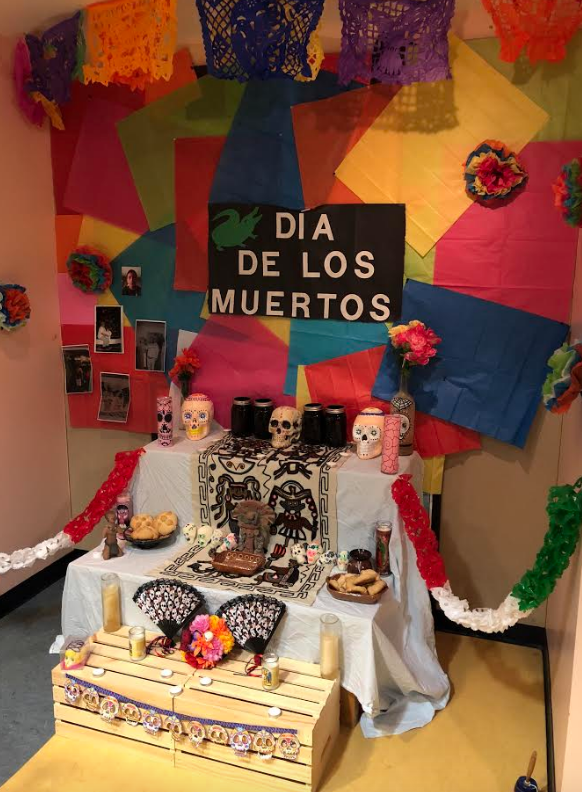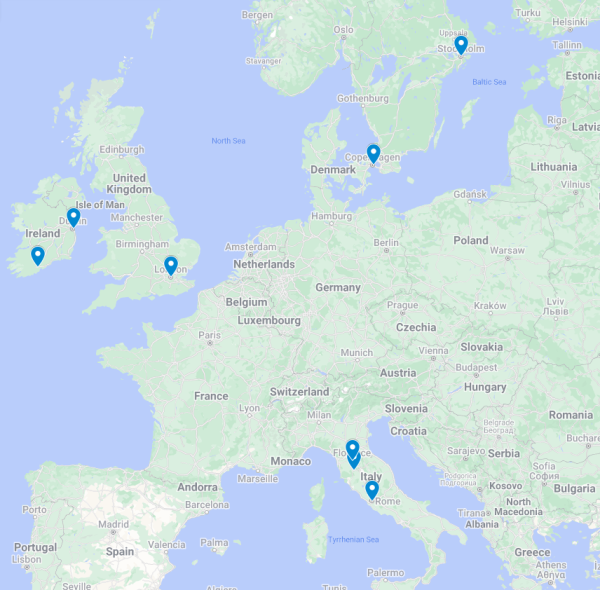Día de los Muertos
Students honor loved ones through Day of the Dead traditions
Union Latinx decorated an altar in Grounds for Change and displayed photos to honor their loved ones on Dia de los Muertos on Nov. 2.
There is a common misconception that Día de los Muertos is the Mexican version of Halloween. However, the Mexican holiday is actually a colorful two-day celebration of life. The holiday is celebrated from Oct. 31 to Nov. 2 each year.
Day of the Dead is a demonstration of respect for deceased loved ones.
Celebrations include altars, sugar skulls, decorative paper and food. All of which, Union Latinx brought to Grounds for Change for its Día de los Muertos on Friday, Nov. 2nd.
“(Union Latinx) are celebrating Día de los Muertos today. Día de los Muertos is a traditional Mexican holiday. It translates to Day of the Dead,” Miguel Guillen, ’19, said.
Allegheny Student Leadership and Involvement states that the purpose of Union Latinx is to increase intellectual, cultural and social interactions between Latino students and the rest of the Allegheny campus. Guillen is the current president of Union Latinx.
The members of Union Latinx gathered in Grounds for Change and set up an altar, or oferenda, to honor their deceased loved ones. The altar was covered with brightly colored papers, sugar skulls, pan de los muertos and images of their loved ones.
“In Mexican culture, this day is a day that our dead ancestors are suppose to return from the spirit world and we lay out some of their favorite foods, some of their favorite drinks and their photo in remembrance of them,” said Guillen. “The thought is that when they come back and visit that altars on the Day of the Dead that they are able to take these things with them.”
Grounds for Change was filled with students gathering to celebrate Day of the Dead.
“Basically, you put out things that the deceased people loved,” said Jesus Robledo, ’21.“It is just remembering the people you loved.”
Union Latinx encouraged students to bring pictures of their deceased loved ones to place on the altar.
“Everyone is very welcome to go ahead and put their photo up there and to be a part of this altar,” Guillen said.
Day of the Dead originated with the Aztec, Toltec and Nahua people who believed that mourning the dead was disrespectful. National Geographic reports that in pre-Hispanic cultures, death was a natural phase in the continuum of life.
Día de los Muertos is a two-day celebration because each day is for different group of loved ones. Nov.1 is known as Día de los Inocentes. The first day is dedicated to children who have passed away. The second day, November 2, is Día de los Muertos, when the departed adults return.
Día de los Muertos is not the same thing as the Mexican version of Halloween, but over the years, the celebrations have adopted a few aspects of American Halloween. For example, children dress up in costumes and go trick-or-treating. However, instead of asking for candy, children go out to pedir Muertos, or ask for the dead. Instead of handing out candy, families usually give the children an item from their altar in remembrance of their loved ones.
Day of the Dead is also becoming common to celebrate Day of the Dead in the United States. Cities such as San Antonio, Los Angeles, Chicago and San Diego all held Día de los Muertos celebrations.
Hannah Schaffer is a junior majoring in community and justice studies and minoring in economics and journalism in the public interest. This is Schaffer’s...






